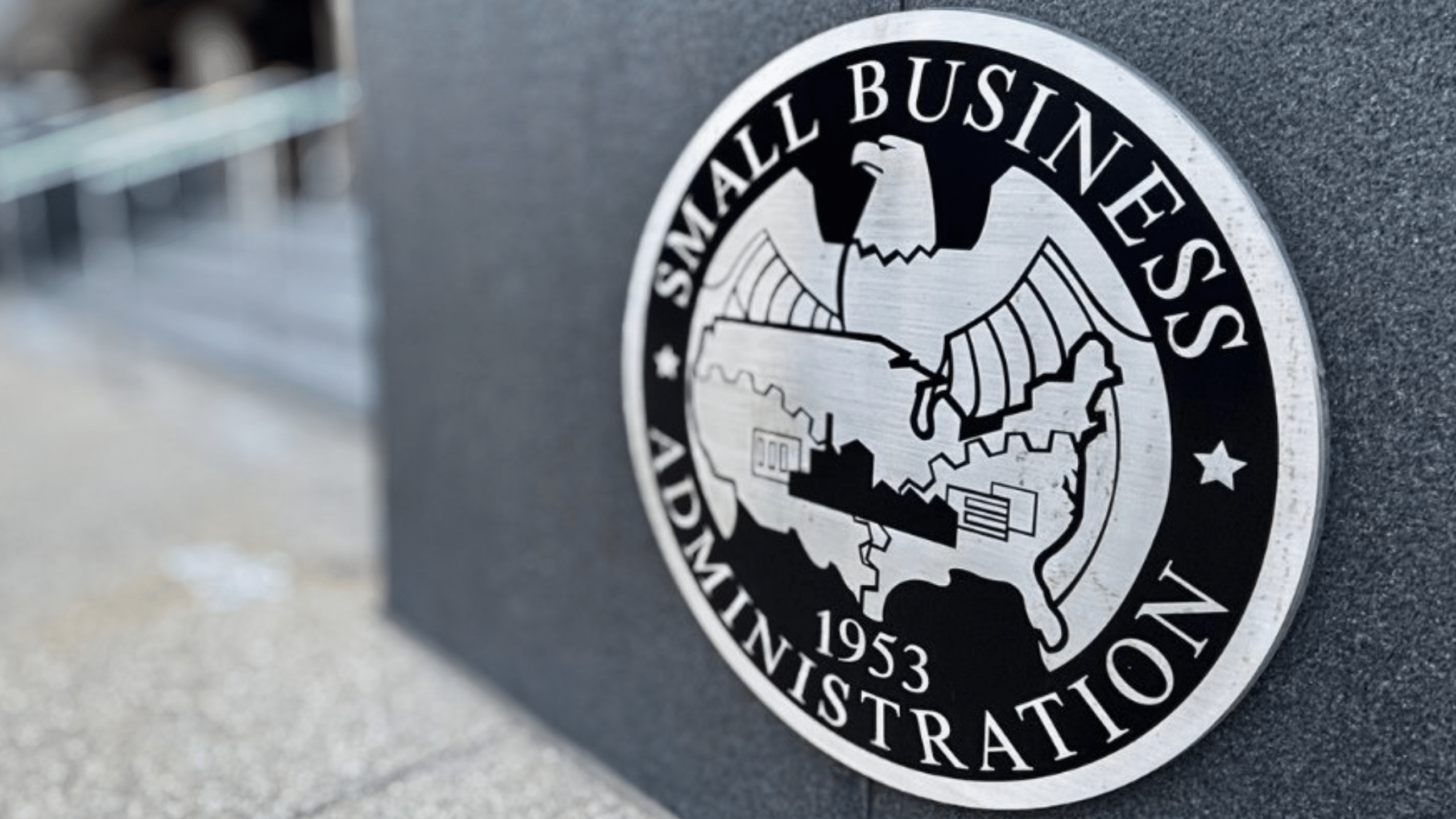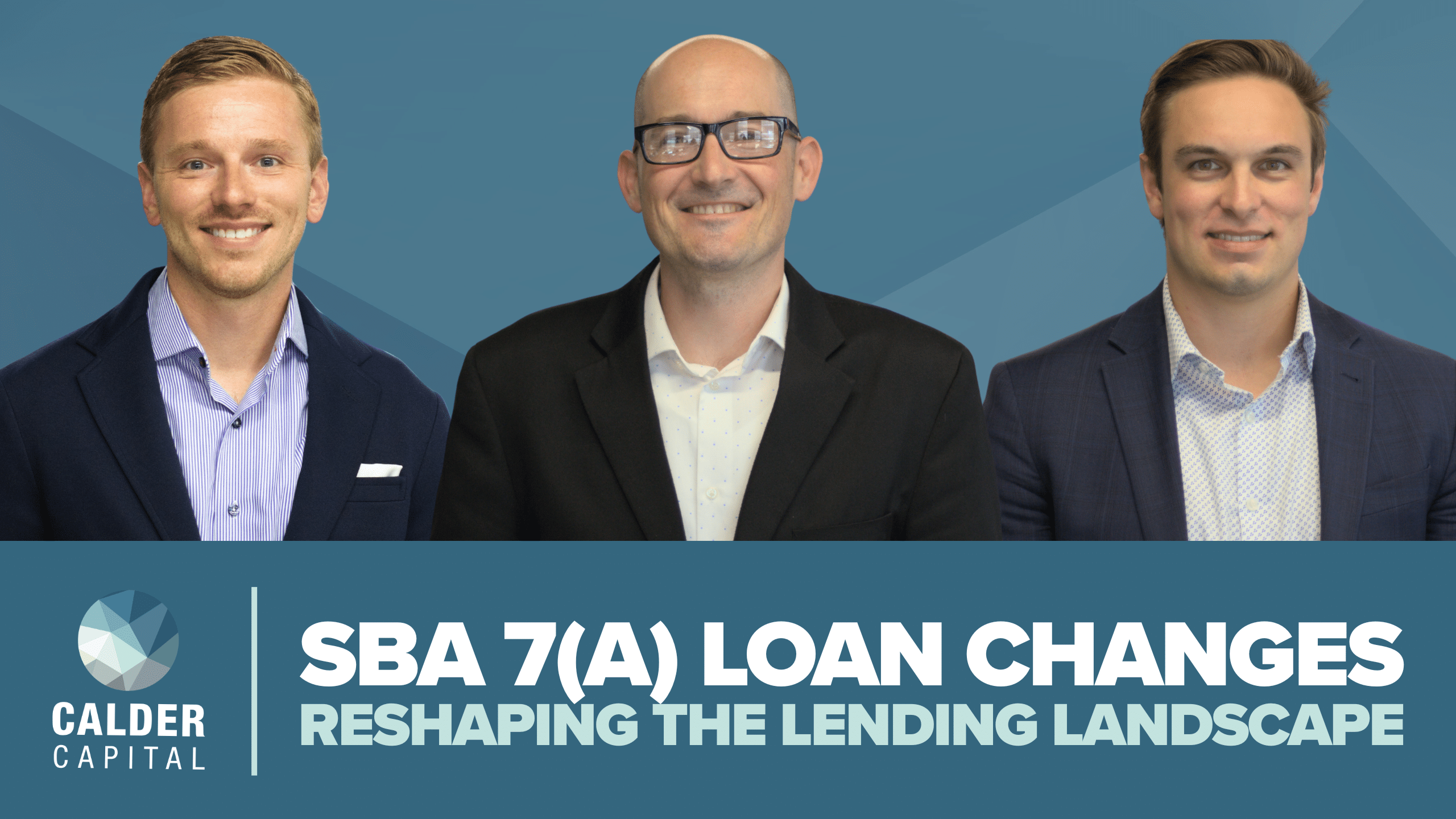Significant changes to Small Business Administration (SBA) 7(a) loan guidelines that took effect June 1, 2025, are now rippling across the M&A landscape. These changes, triggered by “negative cash flow for the first time in thirteen years,” per the Small Business Administration, have resulted in altered deal structures, narrowed buyer eligibility, and impacted timelines for business transactions.
In the SBA’s press release, SBA Administrator Kelly Loeffler elaborated on the cause for the changes, saying, “to safeguard taxpayer-backed capital and small business formation, the SBA is taking immediate action to reverse these policies [of the prior Administration], starting with the restoration of lender fees to protect the future of the program.”
As advisors to business buyers and sellers nationwide, Calder Capital is closely monitoring how these rule shifts are transforming financing strategies, especially for lower middle market transactions.
Since 1953, SBA 7(a) loans have served as the financial backbone of small business acquisitions in the United States, with about 70,000 approvals issued annually in recent years, and a recent average of $443,097 per loan. But with the SBA’s May 29, 2025 Standard Operating Procedure 50 10 8 notice, the agency has adopted more conservative underwriting standards, in response to internal risk concerns and pressure for greater program accountability.
Sam Scharich, Buy-Side Director at Calder Capital, shared, “The SBA’s latest revisions bring their loan program into a stricter era. The changes initially generated a level of pause in a few of our transactions.” He continued, “For some buyers, the changes have caused a pivot or adjustments to the cap table. We have found that the removal of the two-year standby note’s ability to count as buyer equity has specifically been detrimental to deal-making.”
Max Friar, Calder’s Managing Partner, noted, “A few policies have now been materially changed with the new Administration. Namely, the ability to have seller rollover equity in the cap stack has essentially been deemed unviable and effectively eliminated. The SBA also requires full personal guarantees from all stakeholders, even minority owners, and certain guarantees of the SBA loan from the seller. These updates are proving to challenge and limit who is now able to buy, or is willing to sell a business.”

One of the most sweeping changes is the SBA’s change of partial ownership transfers. All partial ownership transfers in SBA-financed transactions must now involve full stock purchases; asset deals are prohibited, and any seller who retains even a sliver of equity must personally guarantee the entire SBA loan amount. In practice, this disqualifies many previously viable structures and may encourage sellers to exit entirely, even if they’re interested in staying on in a minority capacity.
The equity injection requirements have also tightened. All buyers must now inject at least 10% of the total project cost using personal, non-borrowed funds. Seller notes may not exceed 50% of the required equity and must be placed in full standby for the entire 10-year term of the SBA loan, a stipulation some are considering as a non-starter.
Other notable policy shifts include a reinstated requirement that SBA-financed businesses be 100% owned by U.S. citizens, nationals, or lawful permanent residents. This is a reversal of the previous policy that permitted partial foreign ownership. Given that as of 2022, 18% of U.S. small businesses are owned by immigrants, this rule is poised to restrict a significant portion of potential buyers from accessing the SBA 7(a) program.
“While SBA loans are still a viable option for many buyers, they are no longer as flexible or appealing,” commented Garrett Monroe, Sell-Side Director at Calder Capital. “Buyers and sellers must now adapt to an increasingly rigid credit box. The days of creative structuring and partial rollovers are behind us, at least for those who pursue lending under this program. Anyone planning to transact in 2025 and beyond needs to educate themselves and adjust expectations accordingly. We are starting to notice that loans are taking longer for processing, and limitations on the nationality of equity shareholders are forcing U.S.-based business buyers with foreign majority or minority investors to reapproach their equity fundraising strategy.”
Timeline impacts are also a growing concern. We have found that many SBA-preferred lenders have outsourced parts of their underwriting process to external vendors, resulting in longer approval timelines and less transparency. These delays, combined with stricter requirements, are prompting some buyers and sellers to explore alternative financing methods.
“According to BizBuySell’s 2025 Insight Report, 41% of business brokers are experiencing deal delays due to these SBA policy changes,” shared Friar. “Even more concerning is that over half of buyers are unaware of these changes altogether. At Calder, we’re committed to keeping our clients ahead of the curve so they can make informed, strategic decisions. Education is the first step to helping our clients achieve their acquisition goals.”
Scharich concluded, saying, “Policy shifts occur from Presidential administration to Presidential administration. We were prepared for change, especially after learning of the SBA’s negative cash flow for this program in 2024. The best we can do is inform ourselves, our clients, and adapt to change. We will continue to advise our clients of their various lending options, and ultimately, we believe that SBA lending will continue to be a tremendous tool for our business buyers throughout the United States.”

About Calder Capital:
Founded in 2013, Calder Capital is a cross-industry mergers and acquisitions advisory firm with offices across the United States. Calder provides valuation, sell-side, and buy-side services. We are nationally recognized for excellence in advising $1-100M enterprise value transactions in manufacturing, construction, distribution, and business services. Calder serves business owners, entrepreneurs, family offices, financial buyers, and investors. Learn more at www.CalderGR.com.
